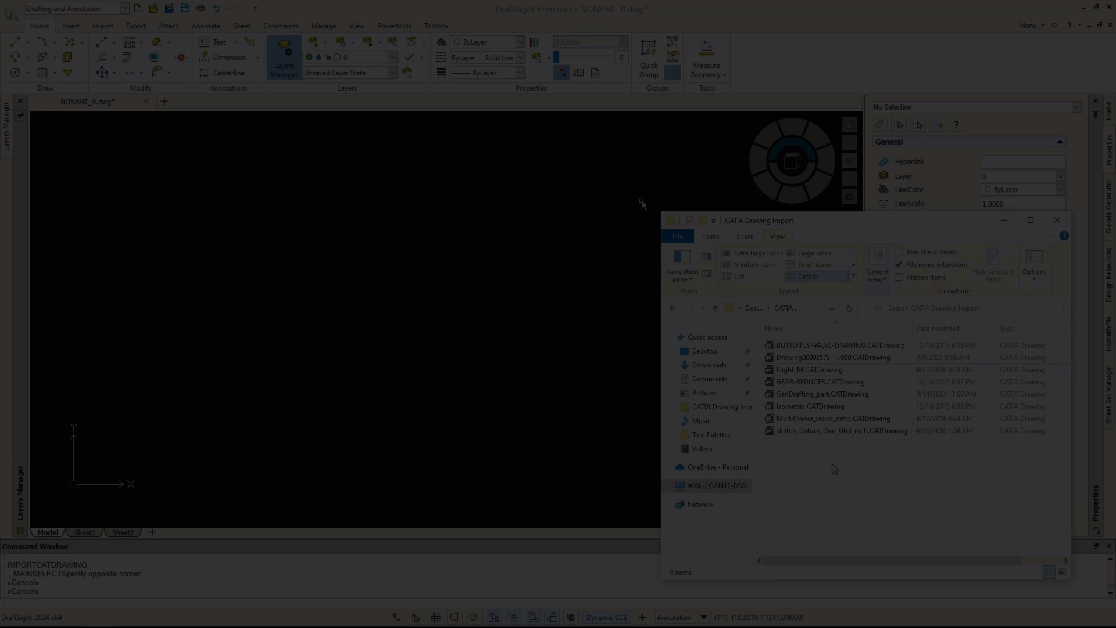Exploring DraftSight’s Enhanced Functionality with CATIA Drawing Import
As the landscape of design software continues to evolve, DraftSight 2024 has taken a significant leap forward with its latest feature – the CATIA Drawing Import functionality. This new feature marks a pivotal moment for DraftSight users, offering improved integration and expanded capabilities for importing CATIA drawings directly into the DraftSight environment.
DraftSight has long been recognized for its user-friendly interface and comprehensive tools for 2D drafting design. With the addition of CATIA Drawing Import, users are now empowered to bridge the gap between different design platforms, facilitating a more efficient workflow and greater collaboration across various design disciplines.
One of the most compelling aspects of this new feature is its ability to maintain the integrity of CATIA drawings during the import process. Whether it’s complex geometric shapes and views, annotations, dimensions, or other critical design elements, DraftSight ensures fidelity and accuracy when transferring CATIA drawings, preserving the original design intent.
The seamless integration of CATIA drawings into DraftSight allows users to leverage the program’s rich set of tools and functionalities. Designers and engineers can now work on imported CATIA drawings within DraftSight, applying edits, annotations, or modifications as needed, thereby streamlining the design review and editing process.

Moreover, the enhanced compatibility between CATIA and DraftSight fosters improved collaboration among teams working on different platforms. This feature significantly reduces the barriers that previously existed when sharing designs between a 3D CATIA environment and DraftSight. It enables designers, engineers, and stakeholders to communicate and collaborate more effectively, leading to faster decision-making and smoother project workflows.
DraftSight’s introduction of the CATIA Drawing Import feature represents a significant advancement in the realm of CAD software. This enhancement is the first of many that not only promotes interoperability between different design platforms, but also enhances productivity, collaboration, and efficiency for designers and engineers.

As DraftSight continues to evolve and innovate, users can eagerly anticipate more exciting features on the horizon. Stay tuned for further updates and enhancements that will empower users, simplify workflows, and continue to drive forward the world of design and engineering.
Our next topic in the series of new feature blogs covering DraftSight 2024 will be the various user interface enhancements that we’ve introduced. We look forward to telling you all about it.
If you’re not a DraftSight user and want to check out all the ways to design in 2D, you can try it by downloading our free 30-day trial. There are no strings attached, and you won’t even need a credit card. Go here, and give it a try today.



